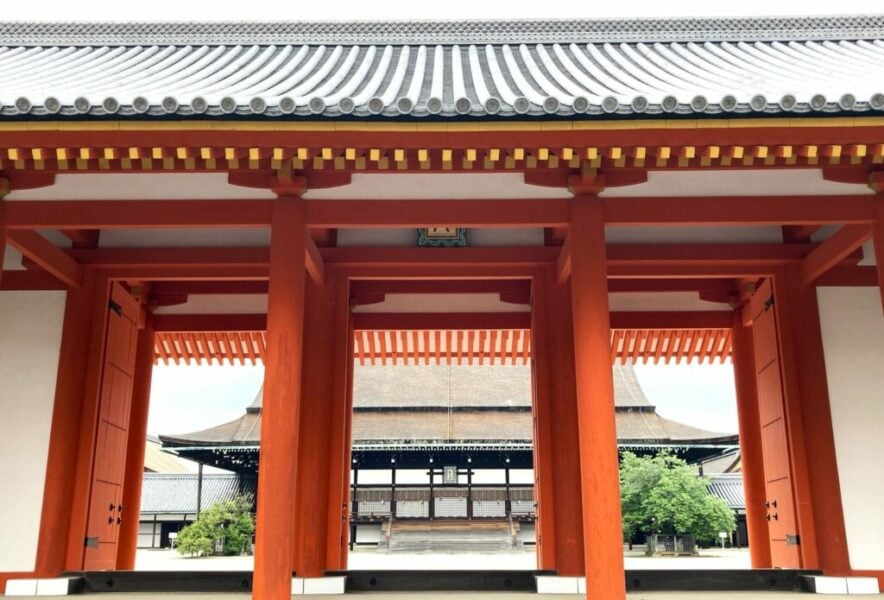The Kyoto Imperial Palace, located in the center of Kyoto, is one of the most popular places to visit when sightseeing in Japan's ancient capital, Kyoto.
The Kyoto Imperial Palace has a very long history, having been the residence of successive emperors for about 500 years until the Meiji Emperor moved to the Imperial Palace in Tokyo in 1869.
Although some days are closed to the public, it is open to the public all year round, and since no advance reservations or applications are required and visits are free of charge, many tourists visit every year.
Why Is the Kyoto Imperial Palace So Famous?
)
The Kyoto Imperial Palace is a facility related to the Imperial Household located in Kamigyo-ku, Kyoto City, Kyoto Prefecture.
It has a long history: from 794, when the capital was moved to the present-day city of Kyoto (Heian-kyo), until 1869, it served as the seat of government in the Japanese capital and as the residence of the emperor.
It was frequently destroyed by fire and rebuilt each time, with most of the current buildings being reconstructed in 1855.
The Shishinden Hall, built in the Heian period (794-1185) architectural style, is a popular sightseeing spot for its architecture and beautiful garden, which evoke the tasteful culture of the Japanese dynasties.
Today, the Kyoto Imperial Palace is used to hold tea ceremonies to celebrate the accession to the throne and as a place to entertain state guests.
It plays an important role as a place to introduce the culture of the Japanese Imperial Family!
Free Admission and Open to the Public All Year Round
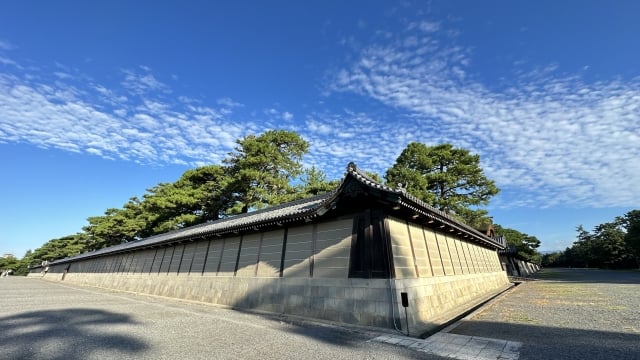
The Kyoto Imperial Palace is a short walk from Imadegawa Station on the Kyoto Municipal Subway Line.
It is located in a corner of the Kyoto Gyoen, a national park with a vast area about two times the size of the Tokyo Dome.
Previously, it was open to the public only during limited periods and could not be visited without a reservation, but it has been open to the public all year round since the fall of 2016.
Since no admission fee is required and anyone can visit, it is a popular spot not only among Japanese tourists but also among foreign tourists.
*The museum is closed on Mondays, during the year-end and New Year holidays, and on days when events are held. Before visiting, be sure to check the schedule on the official website. (https://kyoto-gosho.kunaicho.go.jp/en/visit)
Free guided tours are available in Japanese, English, and Chinese (approximately 50 minutes).
The free guided tours do not require reservations, so you can easily participate on the day of the tour, which is a nice point.
If you are unable to participate, we recommend that you listen to the audio guide app (in Japanese, English, Chinese, French, and Spanish) while you visit the museum.
<Kyoto Imperial Palace: Guided Tour Schedule>
● Japanese (4 times) 9:30 / 10:30 / 13:30 / 14:30
● English (2 sessions) 10:00 / 14:00
● Chinese (2 sessions) 10:00 / 14:00
Highlights of the Kyoto Imperial Palace
The following is a brief introduction to the highlights of the Kyoto Imperial Palace!
1. Shishinden (Ceremonial Palace)

Shishinden, the most prestigious building in the Kyoto Imperial Palace, is where important ceremonies such as the Emperor's coronation were held.
In front of the shishinden is the dan-tei (southern garden) paved with white sand, with the ukon no tachibana (orange tree) on the left side and sakon no sakura (cherry tree) on the right side, symbolizing the Kyoto Imperial Palace.
Although not flashy, the roof is made using traditional techniques such as shifting the cypress bark little by little and securing it with bamboo pegs, and layering it layer by layer, giving visitors a sense of traditional Japanese architectural beauty and the culture of the imperial court.
2. Seiryoden (Inner Palace)
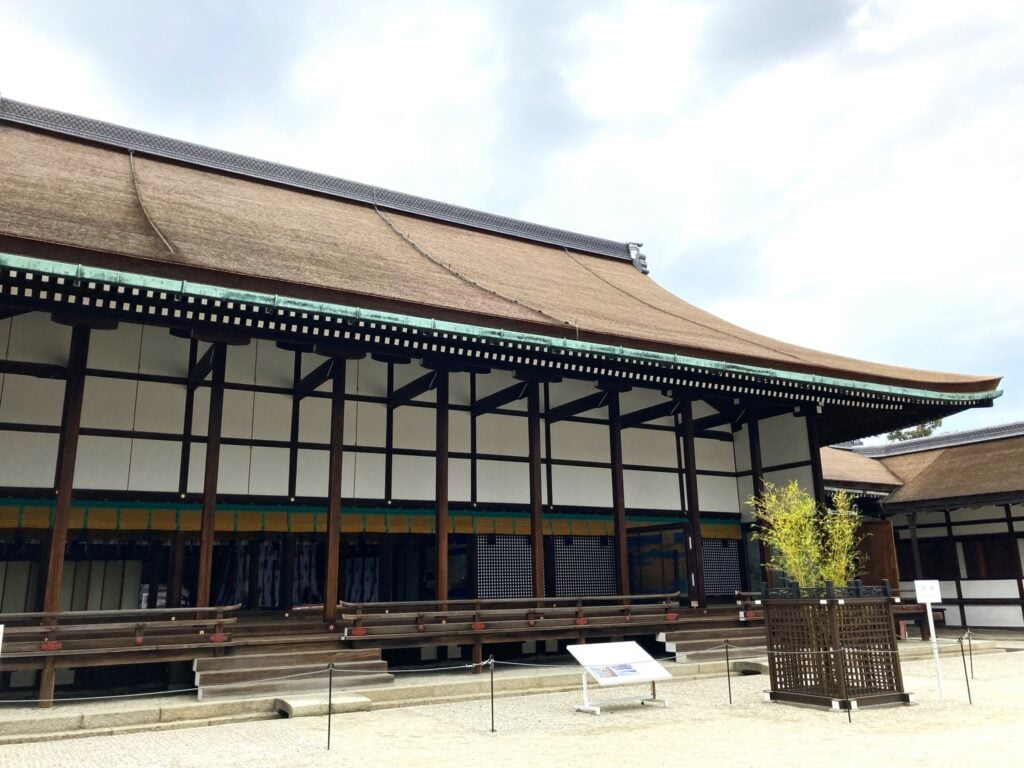
Seiryoden, located in the Kyoto Imperial Palace, is a restored Heian-period style building similar to the previously introduced Shishinden, and is a facility where visitors can experience the culture of the Japanese imperial court.
Seiryoden is the place where the emperor goes about his daily life, and is located immediately behind Shishinden.
3. Oikeniwa (Pond Garden)
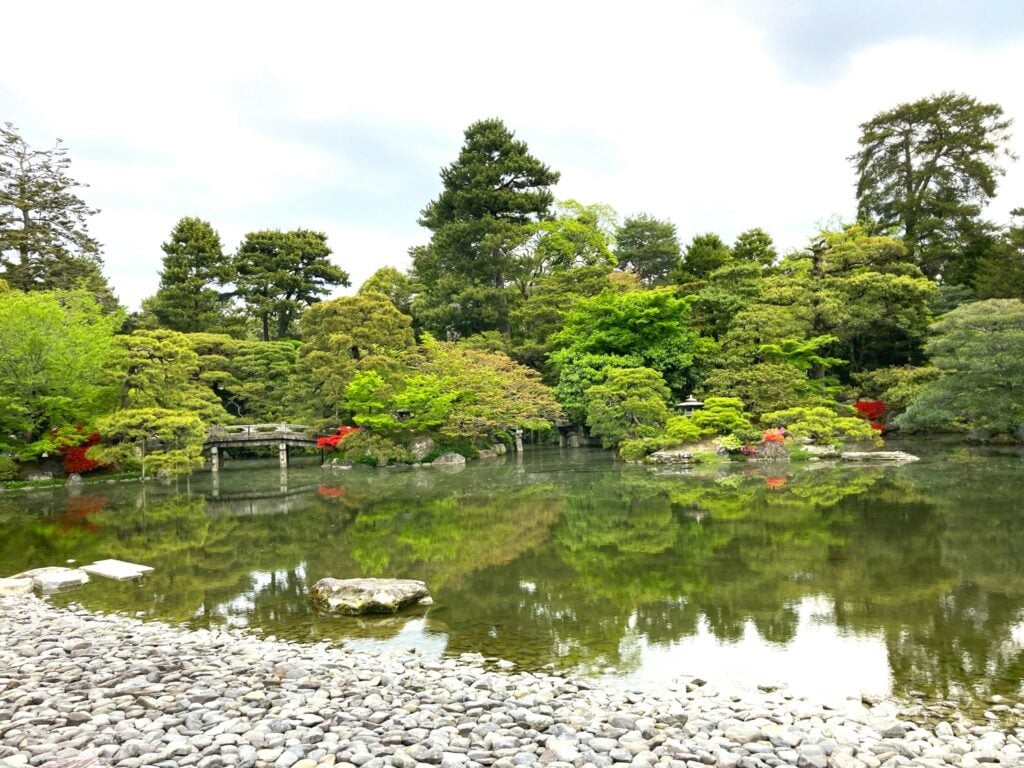
The Kyoto Imperial Palace has a garden called Oikeniwa (niwa means garden).
The garden is a circular garden where visitors can enjoy the beautiful seasonal scenery of Japan by walking around the pond, watching the wild birds fly by, and enjoying the autumn leaves in season.
4. Kyoto Gyoen National Garden
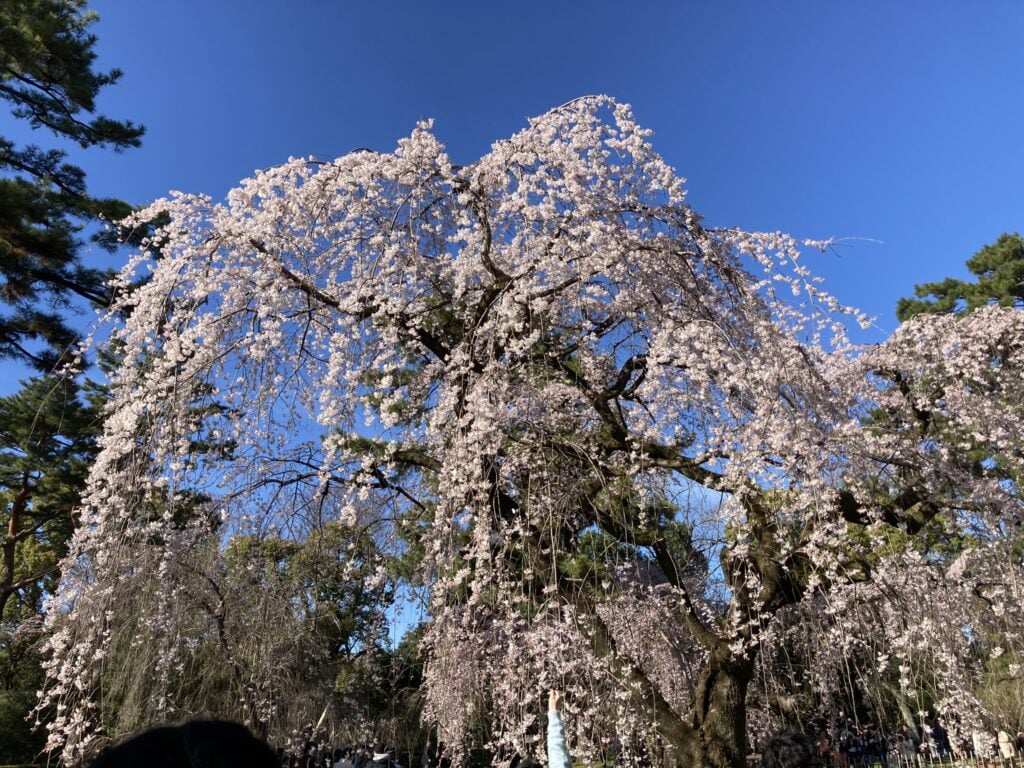
After visiting the Kyoto Imperial Palace, it is recommended to take a walk in the surrounding Kyoto Gyoen National Garden.
The Kyoto Gyoen is a place of recreation and relaxation for the citizens of Kyoto, stretching 1,300 meters from north to south and 700 meters from east to west, where you can enjoy seasonal plants such as cherry blossoms, plum blossoms, peach blossoms, and autumn leaves.
There are rest areas and cafes in the garden for visitors to enjoy a moment of relaxation after a stroll!
Let’s Visit the Kyoto Imperial Palace, the Historical Residence of the Emperor!
The Kyoto Imperial Palace has been the residence of emperors for about 500 years.
Today, you can visit the Kyoto Imperial Palace without reservation and free of charge.
It is one of the most important places to learn about Japanese history and imperial culture, so please visit at least once when sightseeing in Kyoto!
■ Kyoto Imperial Palace
Address: 3 Kyoto Gyoen, Kamigyo-ku, Kyoto-shi, Kyoto
Phone:075-211-1215
Hours: 9:00-17:00
*Closes on 16:30 from March and September, closes on 16:00 from October to February. (Last admission: 40 minutes before closing)
Closed: Mondays (or the following day if Monday is a national holiday), Year-end and New Year holidays
*Other days may be closed due to events, etc.
Admission: Free
Access: 5 min. walk from Imadegawa Stn. on the Kyoto Municipal Subway Line, 5 min. walk from Karasuma Imadegawa Stn. on the city bus, 20 min. walk from Demachiyanagi Stn. on the Keihan Line
https://kyoto-gosho.kunaicho.go.jp/en

